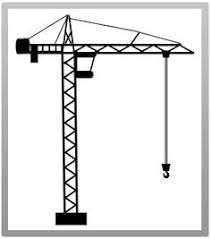The answer is they both will endure a catastrophic collapse if critical components are removed.
What happened in Seattle?
For the best explanation watch AvE’s YouTube Video Seattle Crane Collapse | IRONWORKERS REMOVED THE PINS?! and Seattle Crane Collapse | New Photos and Follow up. ***PLEASE NOTE****AvE (BOLTR) uses colourful language which may not be suitable for the workplace or small children.
Where? New Google Building, downtown Seattle
What?– A tower crane was in the process of dismantling by another crane.
– The wind was upwards of 25 mph; however, the structural failure was not due to high winds
– The crane failed from the base section upwards
– There was no buckling in the tower crane sections which suggests bolts were not placed.
Fatalities? 2 x steelworkers, a young student and a mother who was crushed in front of her child
Why? It could have easily been prevented if bolts had been sequentially removed from the top-down as each section was disassembled.
The formal report on what happened is yet to come out; however, reading the comments section it shows some industry heavy hitters believe AvE is on the money. I also appreciate that he repeatedly references the ongoing effects for everyone involved, including the police, fire and emergency workers, coroners, investigators, engineering recovery team and bystanders that witnessed the event.
Catastrophic Collapse – Why is this relevant to NZ Residential Scaffolding?
Of late I’ve been on too many construction sites where ‘someone’ (of course, no one ever owns up) has removed bits of scaffold. The key concerns are:
- Planks on lifts
- Tube used for bracing
- Self-closing gates (either removed or tied back)
What people don’t seem to realise is that all the bits of kit are there for a reason and if you remove part of it, the scaffold becomes your problem when it collapses.
Non-Scaffolders Top 10 Basic Scaffold Checklist:
Here are a few things to check if you are working on a scaffold:
- Check the scaff tag. Has scaffold been inspected in the last week and is it fit for the work you are going to do?
- You can lightly kick steel base plates or timber sole-boards/ bearers (with steel cap boots on) and nothing happens
- You can push up on the planks/ scaffold boards that make up the platform (lift) and they don’t move
- Scaffold planks are in good condition – there are no obvious cracks
- Ladders are secure
- Gates self-close behind you
- You can rattle a handrail and nothing happens
- There are mid-rails and toe-boards in place to stop gear falling off
- Containment screening is used where required in high traffic areas
- You remove all equipment and materials from the scaffold at the end of the day
As always, if you have anything to add to the discussion what causes a catastrophic collapse please call Sarah on 0272 007 680 or email sarah@employmenow.co.nz.
Have a safe and productive week,
SB
P.S. If you like AvE’s style you may enjoy his BOLTR (Bored of Lame Tool Reviews) videos. My top favs are:
BOLTR: Juicero, Cold Press Juicer for Rich Weirdos
BOLTR: Bosch Mini Chainsaw | KID SIZED DANGER!
Again, please note these videos are not politically correct, both language and off-colour jokes are not fit for work
